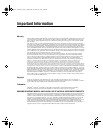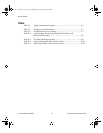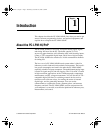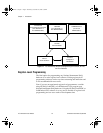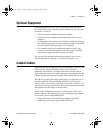
About This Manual
National Instruments Corporation xi PC-LPM-16/PnP User Manual
Non-PnP Non-PnP (non-Plug and Play) means that the board requires you to
manually configure the product’s base address and interrupt level with
switches and jumpers. You must perform this configuration before
installing the board into your computer.
PC PC refers to the IBM PC/XT, PC AT, Personal System/2 Models 25
and 30, and laptop compatible computers.
PC-LPM-16/PnP PC-LPM-16/PnP refers to both the Plug and Play and the non-Plug and
Play versions of the board.
PC-LPM-16PnP PC-LPM-16PnP refers to the Plug and Play version of the board.
PC-LPM-16 PC-LPM-16 refers to the non-Plug and Play version of the board.
PnP PnP (Plug and Play) means that the board is fully compatible with the
industry-standard Plug and Play ISA Specification. All bus-related
configuration is performed through software, freeing you from
manually configuring jumpers or switches to set the product’s base
address and interrupt level. Plug and Play systems automatically
arbitrate and assign system resources to a PnP product.
Abbreviations, acronyms, metric prefixes, mnemonics, symbols, and
terms are listed in the
Glossary
.
National Instruments Documentation
The
PC-LPM-16/PnP User Manual
is one piece of the documentation
set for your DAQ or SCXI system. You could have any of several types
of manuals depending on the hardware and software in your system.
Use the manuals you have as follows:
•
Getting Started with SCXI
—If you are using SCXI, this is the first
manual you should read. It gives an overview of the SCXI system
and contains the most commonly needed information for the
modules, chassis, and software.
• Your SCXI hardware user manuals—If you are using SCXI, read
these manuals next for detailed information about signal
connections and module configuration. They also explain in
greater detail how the module works and contain application hints.
• Your DAQ hardware documentation—This documentation has
detailed information about the DAQ hardware that plugs into or is
connected to your computer. Use this documentation for hardware
a.Book : d.ATM Page xi Wednesday, November 20, 1996 6:36 PM




